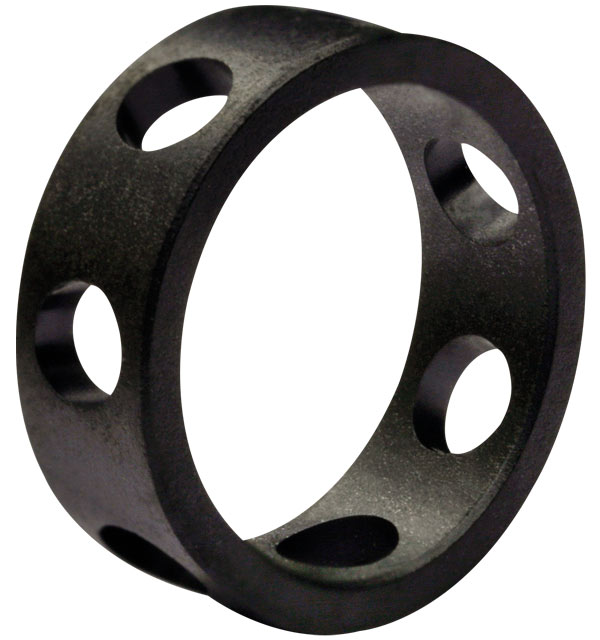Cages

Standard cage two-piece tightly crimped steel cage model “480”
This two-piece cage is manufactured using a stamping process. It is sufficient for most applications where there are no extreme requirements. It can be used where no low starting or running friction torque are required, in applications with medium or high speeds, or if sufficient lubrication is guaranteed.
This type of cage is supplied as standard with most miniature radial ball bearings when contamination, misalignment and high acceleration/deceleration are not important. If the cage is to be used with a speed characteristic value n x Dm above 400000 (n = speed in rpm; Dm = pitch circle in mm), please consult our application engineers.

myonic model “48” loosely crimped two-piece steel cage for low frictional torques
This cage is manufactured using a stamping process, is very light and prevents sticking. myonic has developed the “48” model especially for applications requiring low frictional torque or relatively low speeds.
For speeds above 5,000 rpm, please contact our technical department.

Two-part crimped steel cage with coating
For cases where conventional lubricants are not suitable, both the two-piece standard cage model “480” and model “48” can be coated with a fine layer of Teflon or other materials that have a self-lubricating effect. Teflon-coated cages are used for very long storage times, in instruments that work in a vacuum, and in optical systems.
It is strongly recommended to consult our technical office before choosing coated cages and / or to carry out practical tests with the end application.

myonic cage “23” for high speed applications
This ball cage in the form of a crown or a comb is machined or injection-molded from various synthetic materials.
If the correct material is selected, this model can be supplied either oil-impregnated for a longer service life or completely dry if the ambient conditions do not permit lubrication with standard lubricants.
The ball cage model “23” is used in myonic ball bearings for applications with speed characteristics n x Dm of up to 1.3 million (n = speed in rpm; Dm = pitch circle in mm).
For even higher rated speed values, we recommend consulting our application engineers.

myonic cage “25” for angular contact ball bearings in high speed applications
This is a solid one-piece cage that is machined or injection molded.
The myonic cage “25” is specially designed for the RA and RKA series angular contact ball bearings. This ball cage can be supplied in oil-impregnated form to increase the service life in the event of insufficient lubrication.
The ball pockets are designed so that the inner ring of the ball bearing can be removed without the balls falling out.
This means that the two rings can be installed separately if necessary. The ball cage model “25” is used in myonic ball bearings for applications with speed characteristics n x Dm of up to 1.5 million (n=speed in 1/min; Dm = pitch circle in mm).

myonic cage “27” for angular contact ball bearings in high speed applications
This ball cage is very similar to model “25”, with the exception that the ball pockets are drilled through.
When the inner ring is removed, the balls are not held in place with this design. The advantage is the lower frictional torque compared to
the “25” model. Model “27” is used in myonic ball bearings for applications where speed characteristics n x Dm of up to 2.4 million (n = speed in 1/min; Dm = pitch circle in mm) occur.
For even higher speed characteristics, we recommend consulting our applications engineers.

